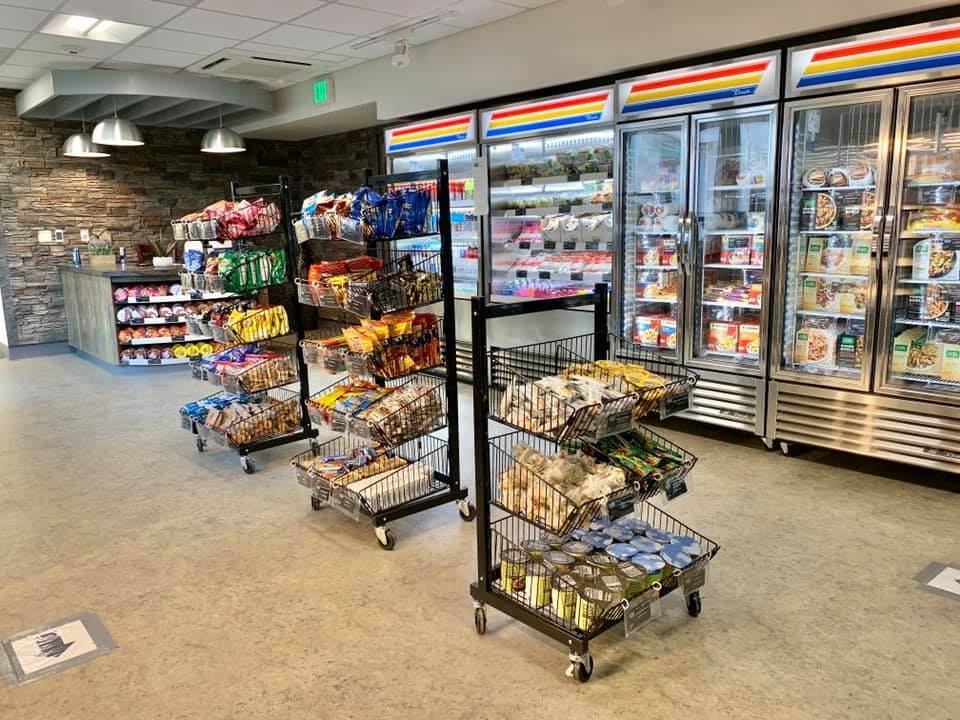When it comes to feeding troops, the food chain isn’t the only chain that matters. The military must also address issues atop the chain of command to ensure service members get the nutrition they need, government auditors argue in a new report.
While the Defense Department has worked to improve nutritious options at military dining facilities in an effort to retain a fit and healthy force, gaps continue to limit officials’ ability to manage and evaluate the effectiveness of nutrition programs, the Government Accountability Office said in a report published Monday.
RELATED

“Poor health and nutrition are growing challenges that threaten the department’s ability to recruit and retain a fit and healthy force,” according to the report.
Clear guidance from the top, crafted by a congressionally mandated board, is needed for effective implementation, oversight and evaluation of nutrition programs on military bases, auditors wrote. DOD has yet to establish that board.
Auditors also urged military officials to improve how food is labeled, in addition to expanding the availability of healthy options on base.
Defense Department officials did not weigh in on the report’s recommendations ahead of its release and did not immediately respond to a request for comment from Military Times.
The military services run more than 400 dining facilities around the world, most of which belong to the Army. But troops have long griped about the lack of healthy dining options on base, from limited operating hours to stingy portions doled out by food service workers to few sources of protein for those stuck at the end of the line.
To help service members find the healthiest choices in those dining halls, the military launched a color-coded nutrition-labeling program called “Go For Green,” or “Fueled to Fight” in the Marine Corps.
Green, yellow and red labels signify the proportion of saturated and total fats, fiber and sugar in a particular food, as well as how they were processed and prepared. Green means “eat often,” yellow is “eat occasionally” and red means “eat rarely.”
But some installations haven’t fully implemented the labeling program, auditors found. Beyond color-coding foods, bases are required to follow placement and promotion guidelines, like putting “green” foods first in the chow line; obey set minimums and maximums for the number of “green” and “red” items athat are available; and employ a certain number of workers who are trained on the program.
GAO auditors recommended that the services be required to establish guidance on what steps the dining facilities need to take to incorporate each of those required elements into their nutrition-labeling programs.
Stronger guidance could help ensure the food on troops’ plates meets minimum nutrition standards, and the labeling program’s requirements, so service members have an easier time making informed decisions about their diets, auditors said.
Inconsistencies can lead to “suboptimal food choices and service member confusion or distrust in the labeling programs,” auditors argued.
Troops in 4 of 5 of discussion groups run by GAO said they didn’t trust that nutrition labels were accurate and ignored them when choosing meals, according to the report.
Though the Defense Department promised to create a congressionally required “leadership cell for food transformation” by September 2022, that team hasn’t yet come to fruition.
Military health officials told GAO they have drafted a charter for what will be known as the “Defense Feeding and Nutrition Board,” tasked with developing policies and procedures to reform the military food enterprise.
But disagreements over who should lead the board have stopped the panel from starting its work.
While the undersecretary of defense for acquisition and sustainment was initially proposed to co-chair the board, that plan has fallen through amid the acquisition branch’s concerns that the panel would overlap with the Pentagon’s existing nutrition committee, GAO wrote. DOD health officials, on the other hand, argue that committee has “insufficient expertise and influence” on the military’s food operations, the report said.
In the meantime, the board’s delays “have prevented critical oversight of food transformation efforts,” auditors said. They recommend the defense secretary clarify or adjust responsibilities for the leadership of that board.
And while the services and DOD do collect some feedback on the food available on military installations, GAO suggested that a stronger set of goals and performance metrics would help track whether those options offer troops well-rounded meals.
Another major hurdle to healthy eating on base is the array of other venues — such as officer clubs, bowling centers, snack bars and commercial restaurants — that aren’t subject to the same nutritional requirements as taxpayer-funded dining facilities and are open longer. Those venues comprise at least three-quarters of on-base food vendors, according to DOD.
For instance, the report said, one large installation has 47 retail food venues that serve customers from 5 a.m. to midnight, compared to 14 military dining facilities, most of which close by 6 p.m.
Restaurants and other vendors that are part of a chain with at least 20 locations must publicly display calorie data on their menus. But that’s not enough, GAO said.
Auditors recommended that military health officials, along with the future Defense Feeding and Nutrition Board, develop a strategy for growing the number of healthy options at those retail establishments, and better define their role in providing nutritious food on military installations.
Karen has covered military families, quality of life and consumer issues for Military Times for more than 30 years, and is co-author of a chapter on media coverage of military families in the book "A Battle Plan for Supporting Military Families." She previously worked for newspapers in Guam, Norfolk, Jacksonville, Fla., and Athens, Ga.





